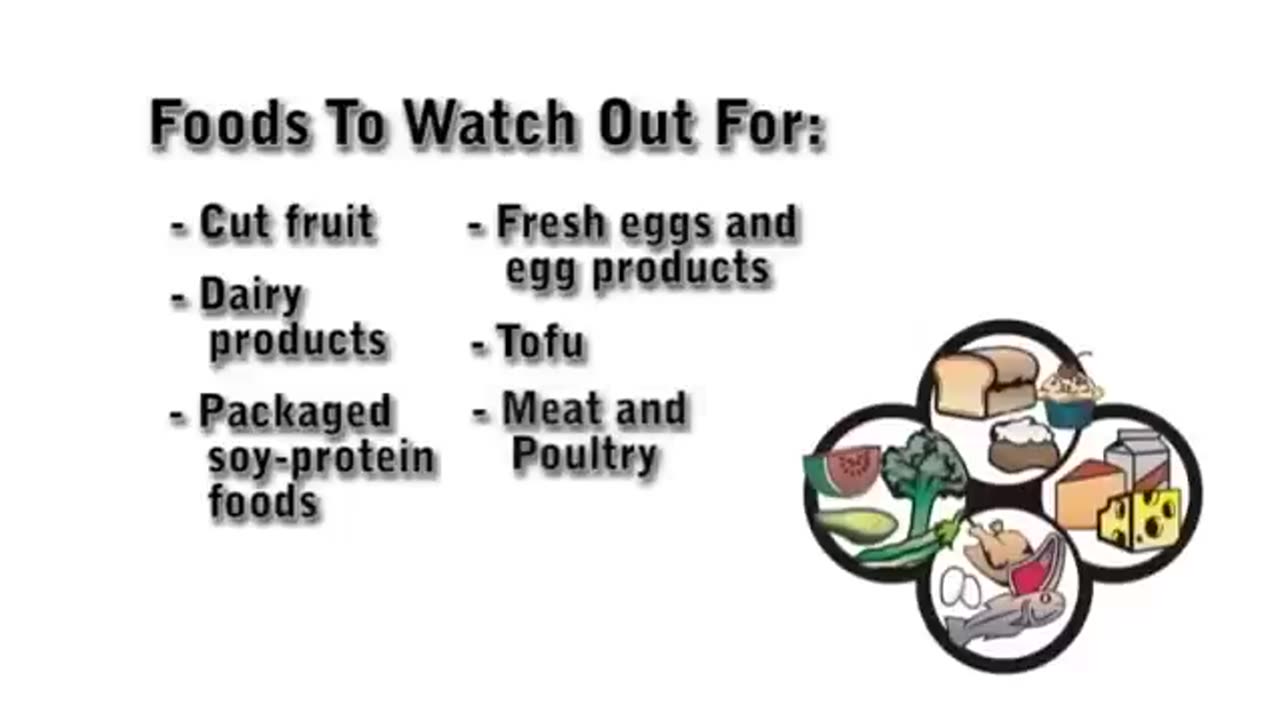Premium Only Content

Food Handler Training Course_ Part 1
### **Food Handler Training Course (Part 1) – Introduction to Food Safety**
Food safety is the foundation of any food-related business. Proper food handling practices protect customers from foodborne illnesses, ensure compliance with regulations, and help maintain the reputation of the establishment. This training course will provide essential knowledge and skills for food handlers to safely handle, prepare, and store food.
---
### **Objectives of Food Handler Training**
By the end of this course, participants will be able to:
1. Understand the importance of food safety.
2. Recognize the risks associated with improper food handling.
3. Learn basic hygiene and food safety practices.
4. Understand their role in maintaining a safe food environment.
---
### **What is Food Safety?**
Food safety refers to the practices and conditions that preserve the quality of food and prevent contamination, ensuring it is safe for consumption.
#### **Why Food Safety Matters**
1. **Protects Public Health:**
- Prevents foodborne illnesses caused by harmful bacteria, viruses, or allergens.
2. **Builds Consumer Trust:**
- Ensures customer confidence in the safety and quality of food served.
3. **Meets Legal Requirements:**
- Complies with local and national food safety laws and standards.
4. **Reduces Waste:**
- Proper food handling prevents spoilage and waste, saving money and resources.
---
### **Common Food Safety Risks**
1. **Biological Hazards:**
- Bacteria (e.g., Salmonella, E. coli, Listeria)
- Viruses (e.g., Norovirus, Hepatitis A)
- Parasites (e.g., Toxoplasma, Giardia)
2. **Chemical Hazards:**
- Cleaning agents, pesticides, and food additives.
3. **Physical Hazards:**
- Foreign objects like glass, metal, or plastic that accidentally contaminate food.
4. **Allergens:**
- Common allergens such as peanuts, gluten, shellfish, and dairy can cause severe reactions if not handled properly.
---
### **The Role of a Food Handler**
Food handlers play a vital role in maintaining food safety throughout the entire food production process. Key responsibilities include:
- **Maintaining Personal Hygiene:**
- Follow proper handwashing and hygiene practices to avoid contamination.
- **Preventing Cross-Contamination:**
- Use separate tools, surfaces, and storage for raw and ready-to-eat foods.
- **Monitoring Food Temperatures:**
- Ensure food is cooked, stored, and served at safe temperatures.
- **Cleaning and Sanitizing:**
- Regularly clean and sanitize equipment, utensils, and workspaces.
- **Reporting Illnesses:**
- Inform supervisors if feeling unwell to prevent spreading illness to food.
---
### **Basic Food Safety Principles**
#### **1. Keep it Clean**
- Wash hands frequently, especially after handling raw food, using the restroom, or touching your face.
- Clean and sanitize all surfaces, utensils, and equipment regularly.
#### **2. Separate Raw and Cooked Foods**
- Prevent cross-contamination by using separate cutting boards, knives, and containers for raw and ready-to-eat foods.
#### **3. Cook Food Thoroughly**
- Use a food thermometer to ensure food is cooked to the recommended internal temperature to kill harmful bacteria.
#### **4. Store Food Safely**
- Keep perishable foods at safe temperatures: below 5°C (41°F) for cold storage and above 63°C (145°F) for hot holding.
#### **5. Practice Allergen Awareness**
- Avoid cross-contact between allergen-containing foods and allergen-free foods. Label allergens clearly and use dedicated utensils and equipment.
---
### **Key Terminology**
- **Cross-Contamination:** Transfer of harmful bacteria or allergens from one surface or food to another.
- **Foodborne Illness:** Sickness caused by consuming contaminated food or beverages.
- **Hazard:** A biological, chemical, or physical agent that poses a risk to food safety.
---
### **Regulatory Standards**
Food handlers must be aware of and comply with food safety regulations set by local health authorities. These standards ensure that establishments meet hygiene and safety requirements.
---
### **Conclusion**
As a food handler, you are the first line of defense against food safety risks. By following proper hygiene, handling, and storage practices, you can ensure that the food you prepare and serve is safe for consumption.
---
**Would you like to continue with specific sections, such as personal hygiene, safe storage practices, or understanding foodborne illnesses?**
-
 6:54
6:54
HSESafetyInformation
6 months ago6 Must Try Breakfast recipes By Food Fusion
351 -
 41:26
41:26
Kimberly Guilfoyle
2 hours agoMaking DC Safe Again, Live with Daily Signal's Tyler O'Neil | Ep249
59.6K14 -
 LIVE
LIVE
Dr Disrespect
6 hours ago🔴LIVE - DR DISRESPECT VS. JEAN-CLAUDE VAN DAMME - HITMAN
1,490 watching -
 32:43
32:43
Uncommon Sense In Current Times
4 days agoAre Women’s Sports Under Attack? | Penny Nance on Protecting Title IX & Biblical Truth
9.57K -
 LIVE
LIVE
LFA TV
22 hours agoLFA TV ALL DAY STREAM - MONDAY 8/25/25
1,331 watching -
 LIVE
LIVE
freecastle
6 hours agoTAKE UP YOUR CROSS- PROTECTING FREEDOM, PRESERVING HOPE!
192 watching -
 1:17:44
1:17:44
The HotSeat
2 hours agoTrump Drops Hammer: Burn the Flag = 1 Year Prison! Army Deployment Next?!
17.7K16 -
 1:30:12
1:30:12
Jamie Kennedy
20 hours agoThe Truth About Anger, Race, & Feminine Energy w/ Jesse Lee Peterson | Ep 219 HTBITY
14.1K2 -
 1:45:39
1:45:39
The Quartering
7 hours agoMMA Fighter Tries To K*LL Wrestler, Hollywood PANIC & Sam Tripoli's Favorite Conspiracies
147K161 -
 1:05:04
1:05:04
Mark Kaye
5 hours ago🔴 Trump Sends Dems Into RAGE Over Flag Burning Executive Order
21.4K21